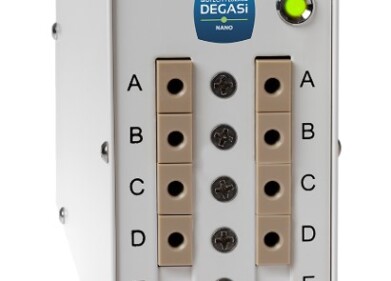Chromatography
What Are the Most Common Phobias?
Nov 27 2017
From spiders to heights, humans are prone to all sorts of phobias. In fact, according to the latest research around 8.7% of Americans suffer from a specific phobia. So what's making people feel anxious?
New research from YouGov offers a glimpse at what makes Brits squirm.
Heights
No surprises here, heights are one of the UK's biggest phobias. A huge 23% of respondents admitted to being extremely afraid of heights, while a further 35% said they were somewhat afraid. Officially this fear is called acrophobia, a term derived from the Greek word "akron" which means peak or edge.
Snakes
In a close second place was snakes, with 21% harbouring a fear of these reptiles. Also known as ophidiophobia, this fear is especially irrational as most snakes are harmless. Interestingly, research suggests that newborns are intrinsically scared of snakes, which indicates that it stems from nature, not nurture.
Public speaking
An intangible fear, public speaking is another common qualm. It's known as glossophobia, with 20% of respondents confessing to feeling anxious when speaking in front of a crowd. Of course, the degree of fear can vary significantly. Some people experience a slight sense of nervousness while others are paralysed with fear.
Spiders
Spider were another big culprit, with around 18% of Brits shying away from eight legged arachnids. Like snakes, it appears that a fear of spiders could be an intrinsic self-preservation reaction. Experts muse that it could stem from their erratic movements.
Small spaces
Commonly known as claustrophobia, the fear of being enclosed in a small space is an anxiety carried by around 14% of the population.
Mice
They may be small, but mice can have a big impact on the psyche. Around 9% of people suffer from this fear, also known as musophobia. Cognitive scientists muse that the fear could be sparked by the widely held notion that mice are disease carrying vermin.
Needles
While they're generally used to ward of viruses and disease, needles trigger a negative reaction for around 8% of people. The condition is called trypanophobia and was only recognised as an official irrational fear in 1994.
Flying
Unsurprisingly, fear of flying made the top 10 list. Around 7% of respondents suffered from aviophobia, with experts explaining that the release of stress hormones during turbulence is a major trigger.
While it's not as common, fear of food, aka cibophobia is another irrational anxiety recognised by medical professionals. Of course, manufacturers must comply with strict guidelines to ensure all edibles are 100% safe. For a close look at the latest technologies used don't miss 'How Safe is Safe? Analytical Tools for Tracing Contaminants in Food.'
Digital Edition
LMUK 49.7 Nov 2024
November 2024
Articles - They’re burning the labs... Spotlight Features - Incubators, Freezers & Cooling Equipment - Pumps, Valves & Liquid Handling - Clinical, Medical & Diagnostic Products News...
View all digital editions
Events
Nov 11 2024 Dusseldorf, Germany
Nov 12 2024 Cologne, Germany
Nov 12 2024 Tel Aviv, Israel
Nov 18 2024 Shanghai, China
Nov 20 2024 Karachi, Pakistan



















